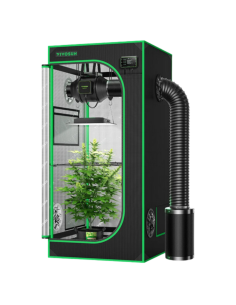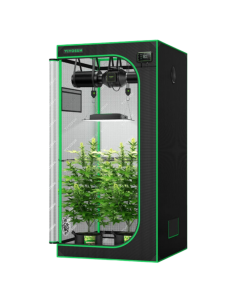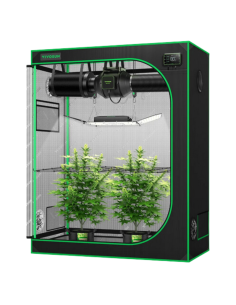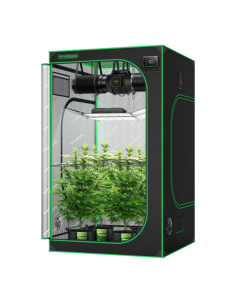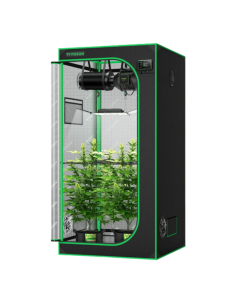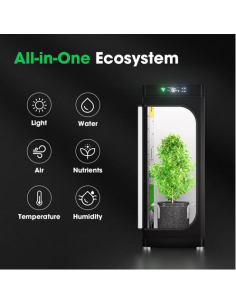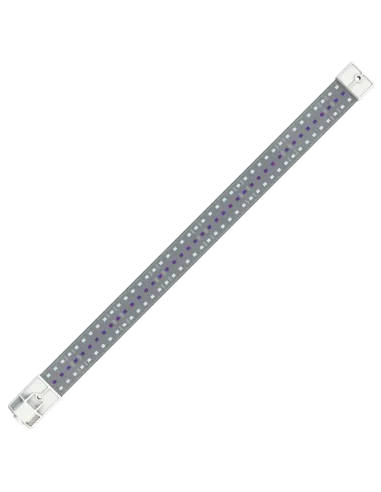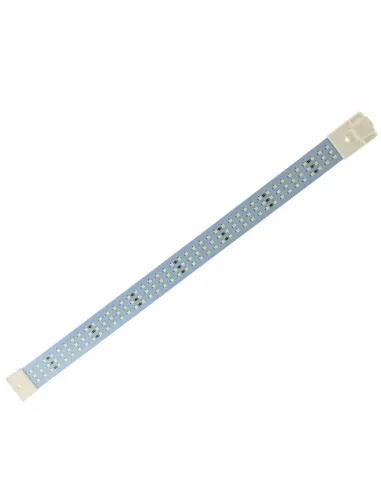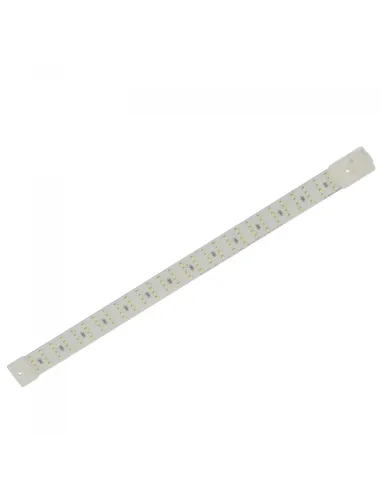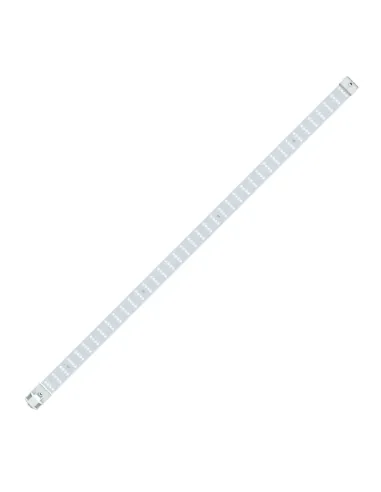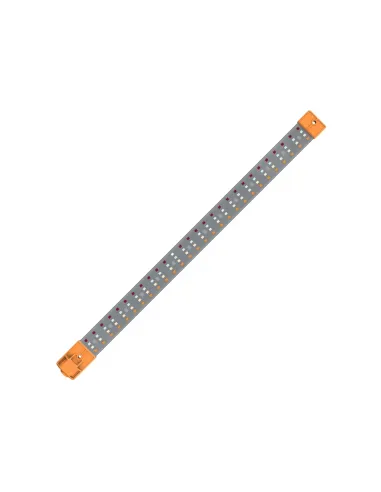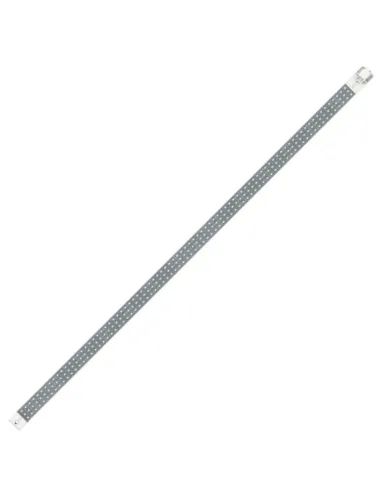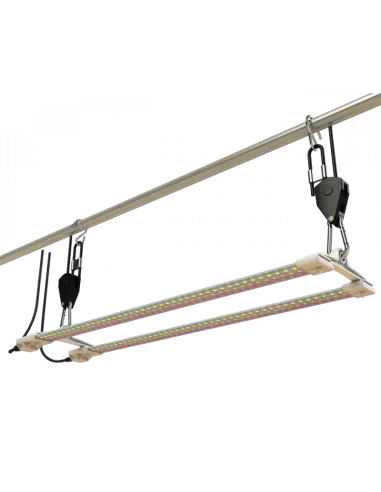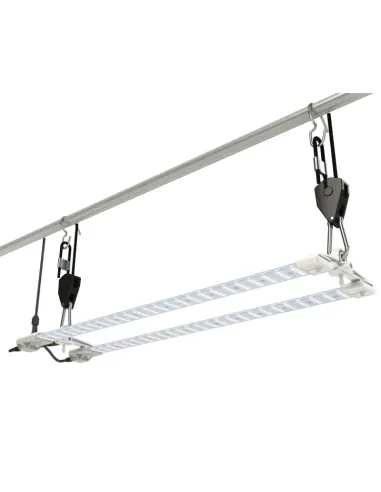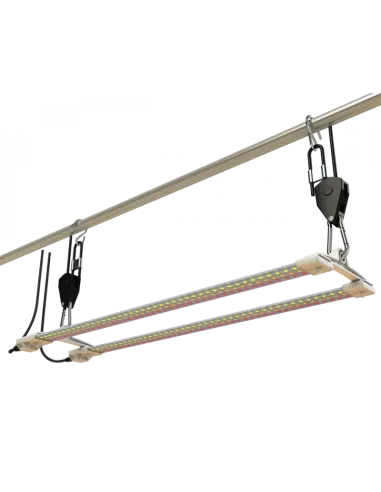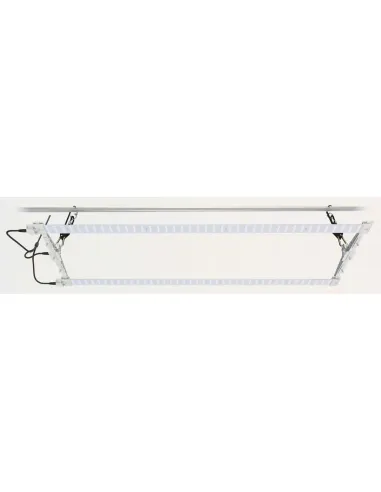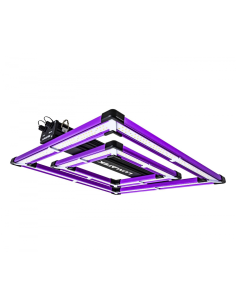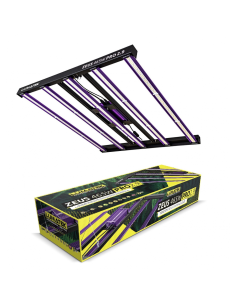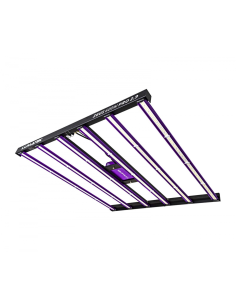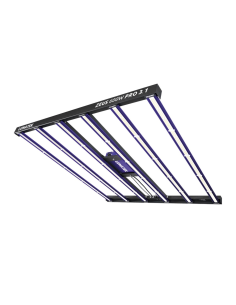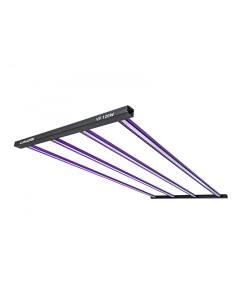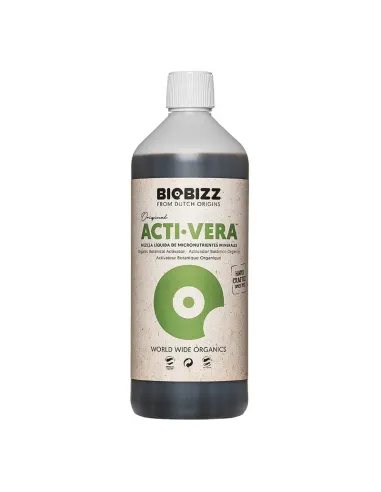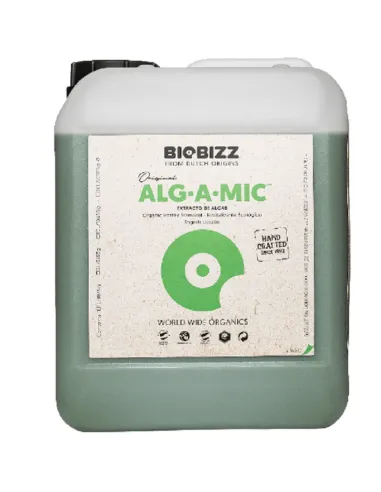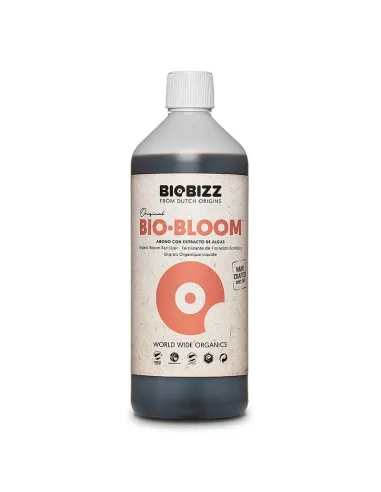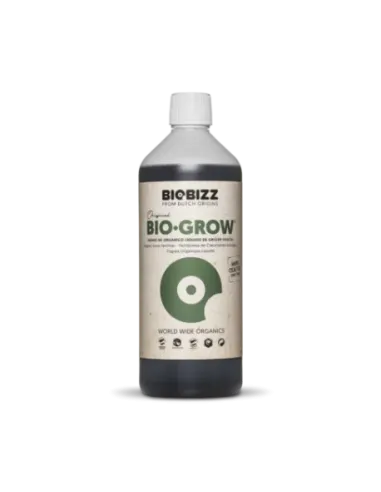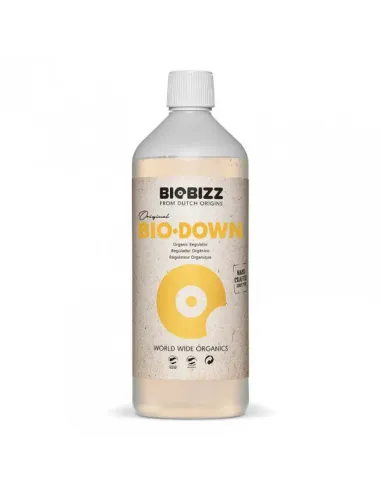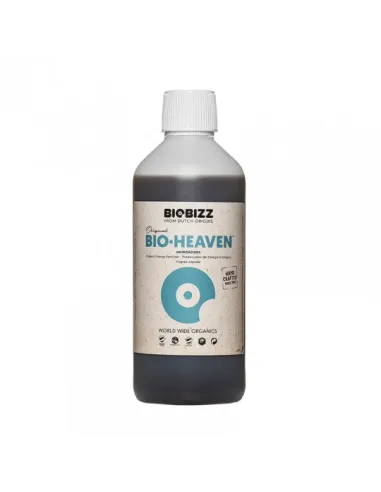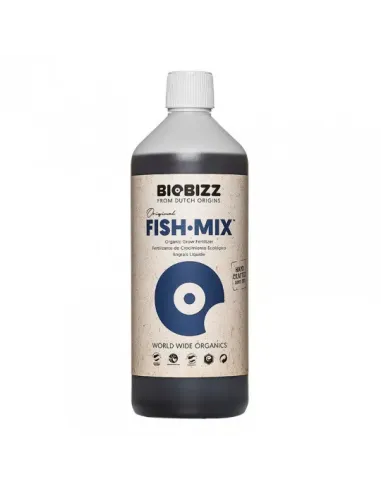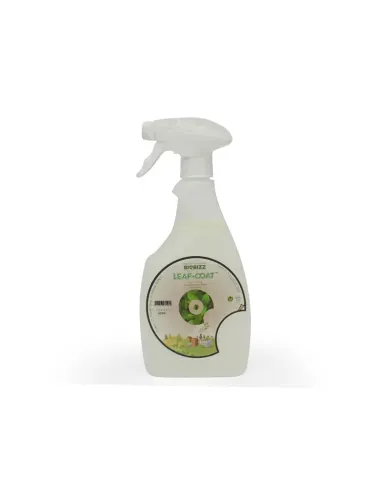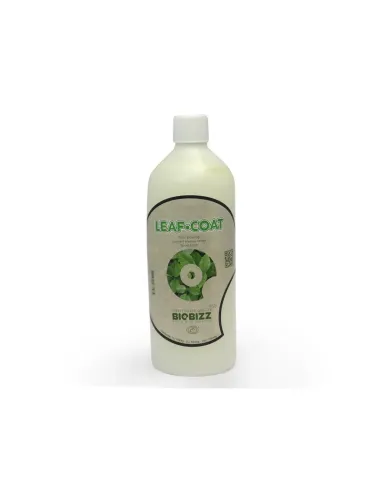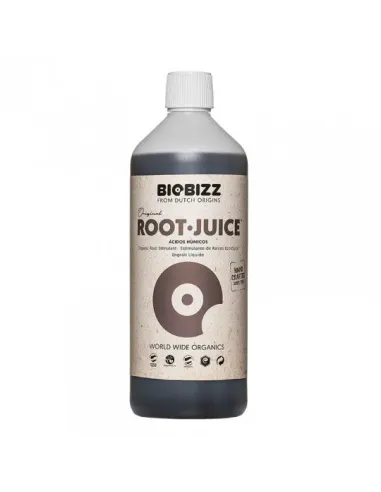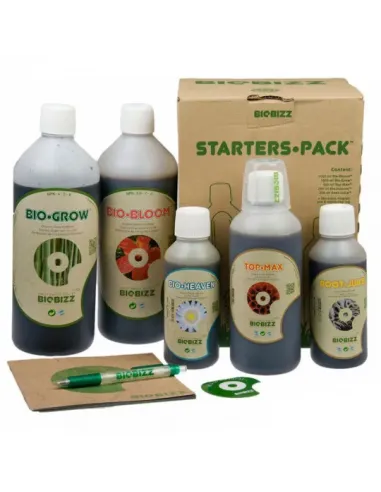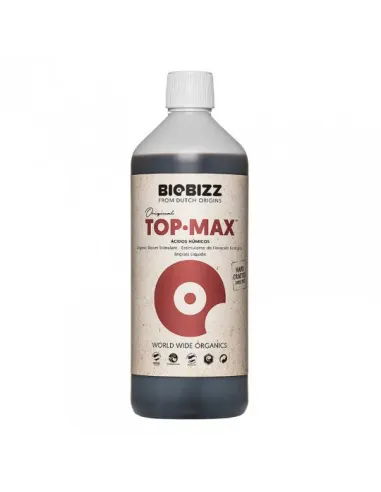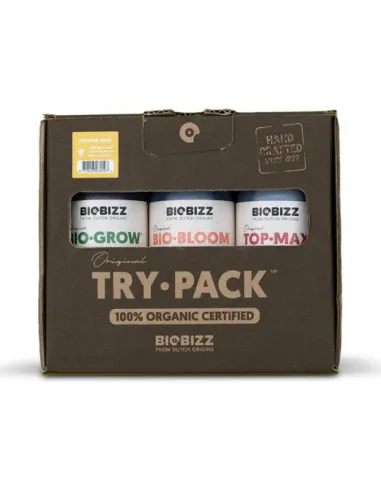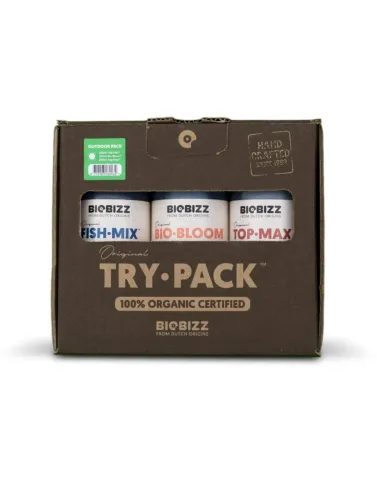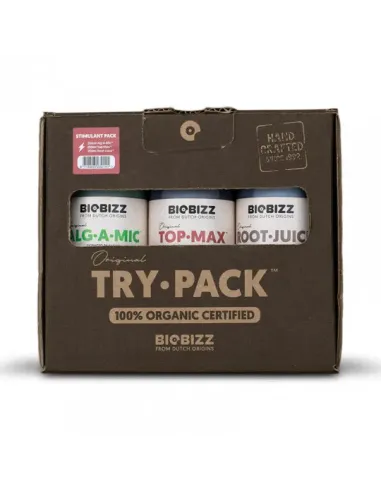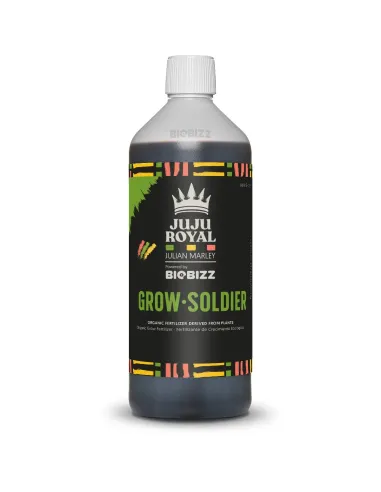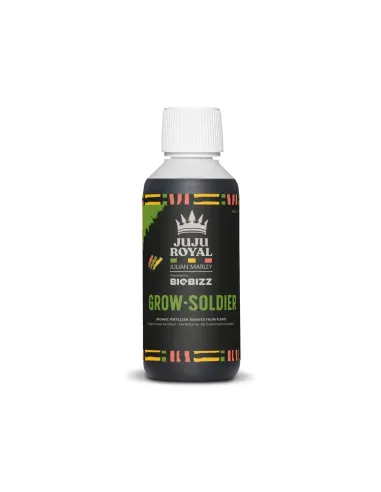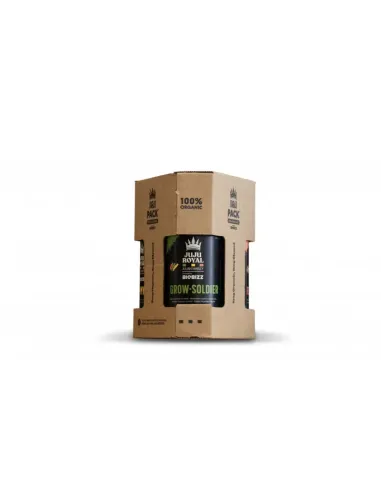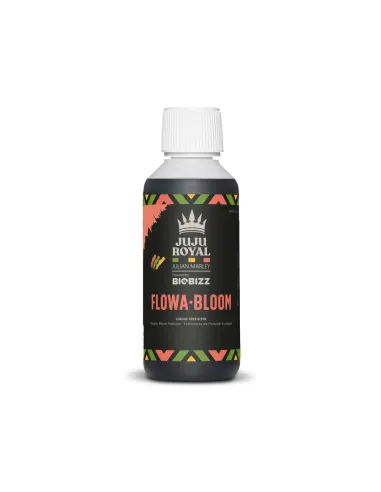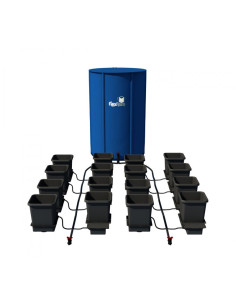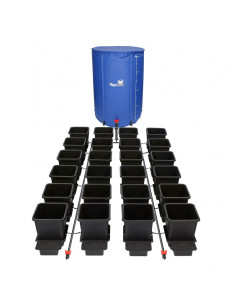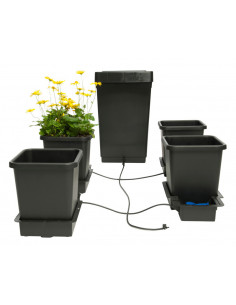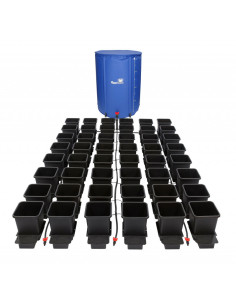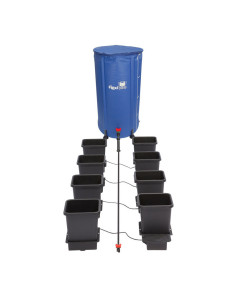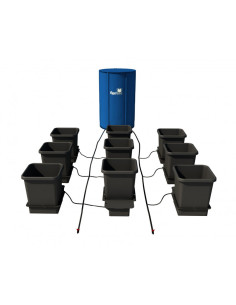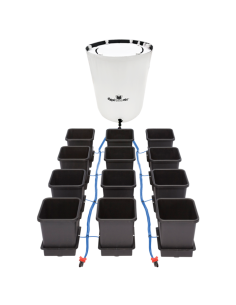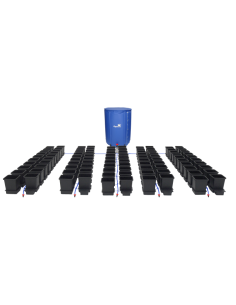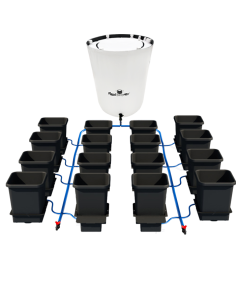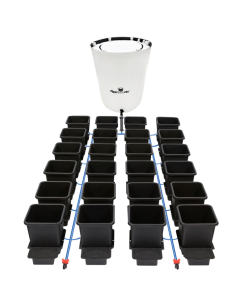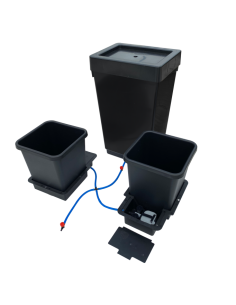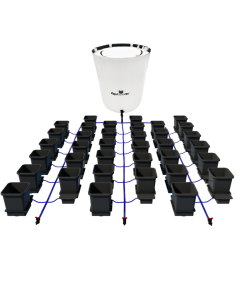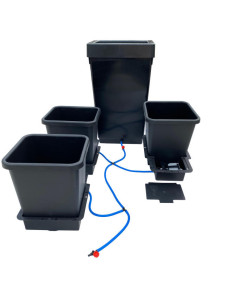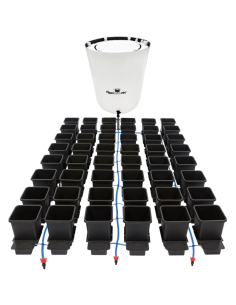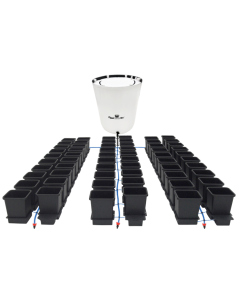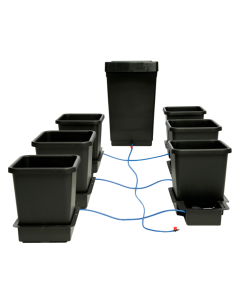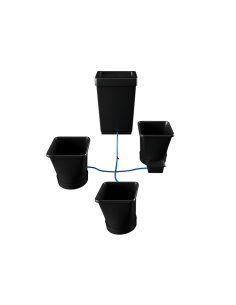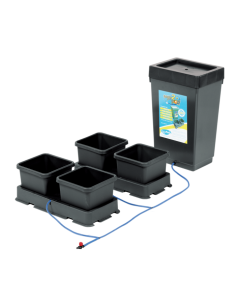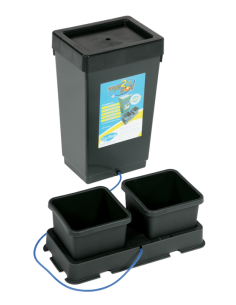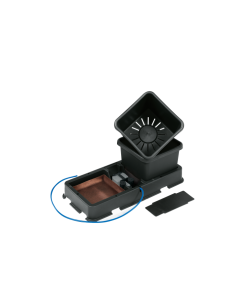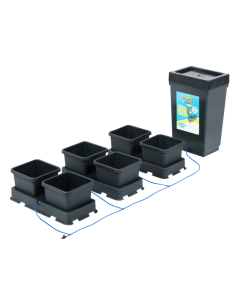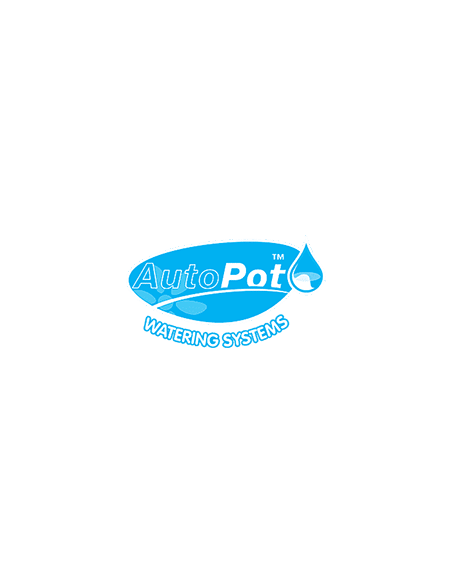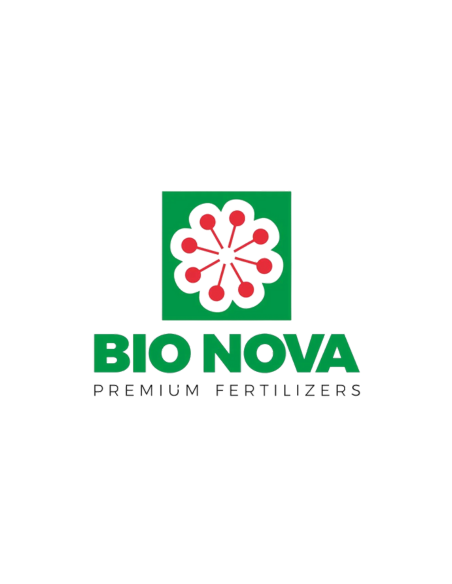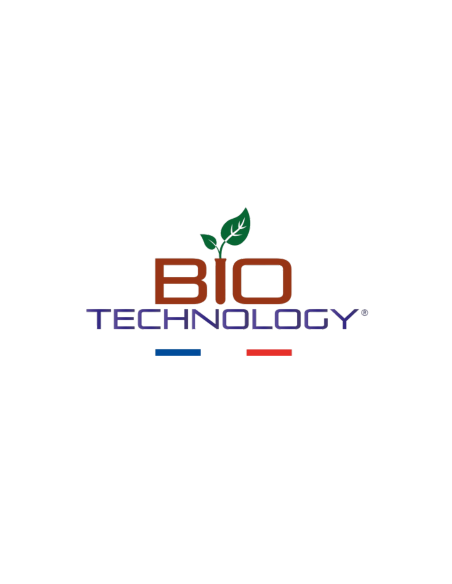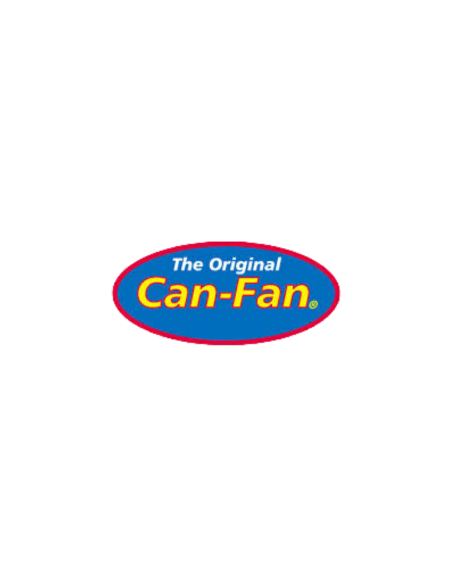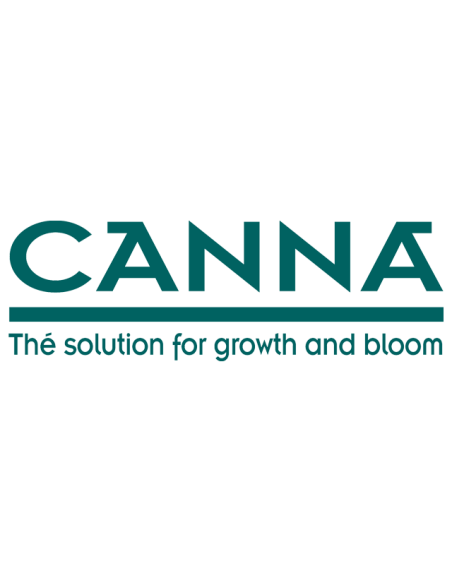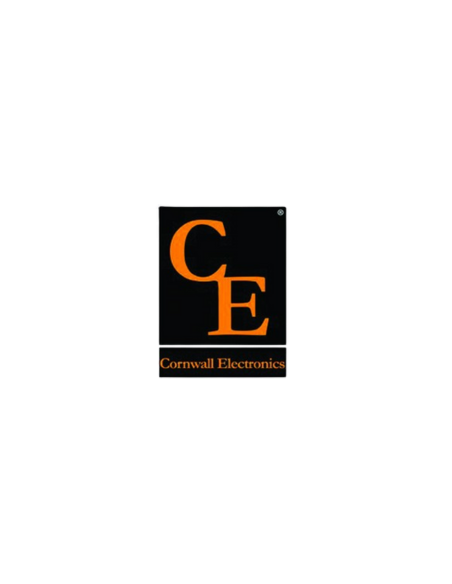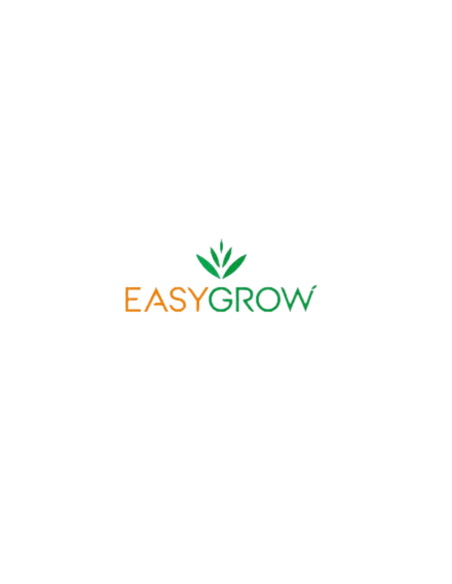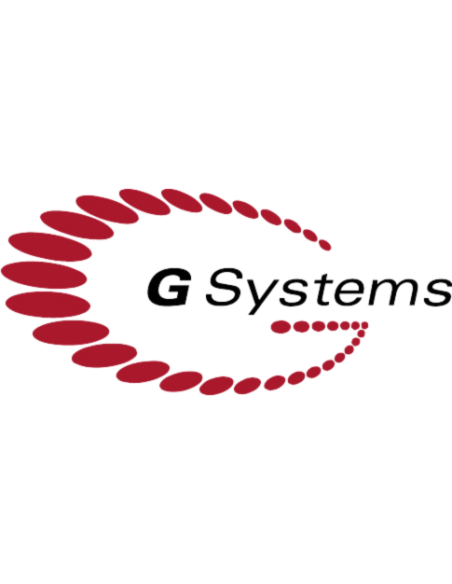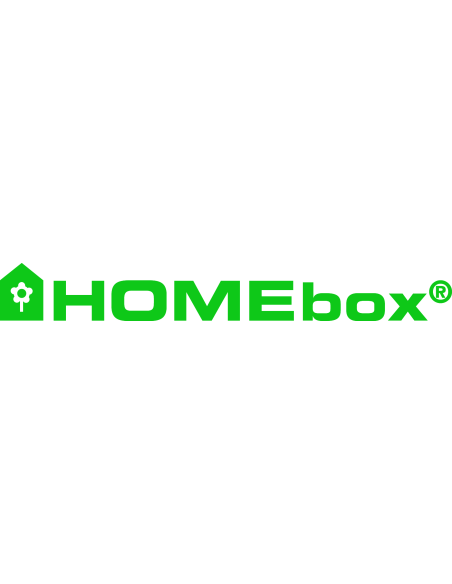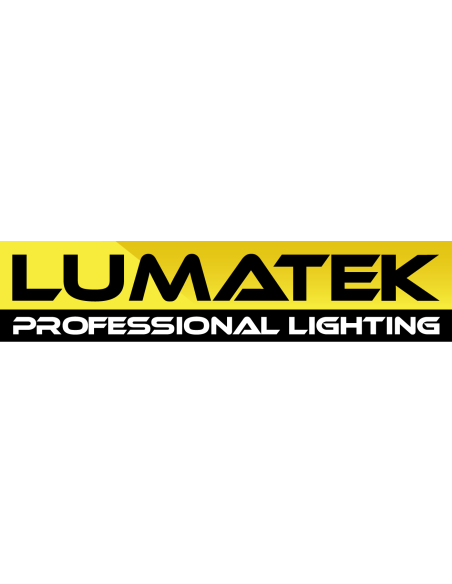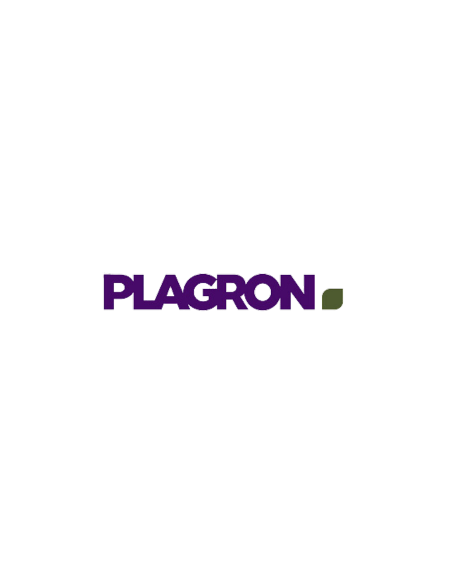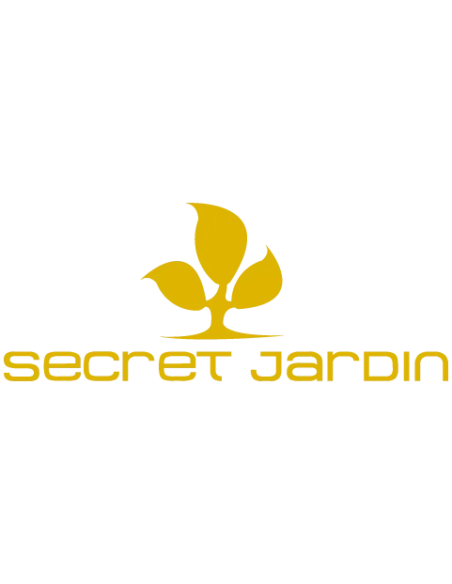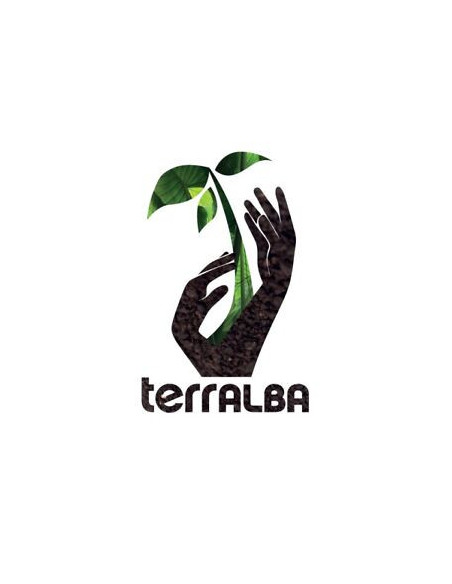



Complete Guide to Grow Tent Kit
Grow tent kits have revolutionized indoor gardening by making it easier and more convenient to grow plants in a controlled environment. Whether you’re a beginner or an experienced gardener, understanding how to use and choose the right complete kit is essential. In this guide, we’ll cover everything from selecting the right size to understanding the benefits of grow tent kits.
What is a Grow Tent Kit?
A grow tent kit is a comprehensive package designed to simplify indoor gardening by providing a controlled environment for optimal plant growth. These kits typically include a grow tent, grow lights, a ventilation system, and other essential equipment needed to cultivate plants indoors. The primary advantage of using a grow tent kit is the ability to create an ideal growing environment, which can significantly improve plant growth and yields.
The benefits of using a grow tent kit are numerous:
Improved Plant Growth and Yields: By controlling factors such as temperature, humidity, and light, grow tent kits create optimal conditions for plant growth, leading to healthier plants and higher yields.
Increased Control: Grow tent kits allow you to adjust environmental conditions to suit the specific needs of your plants, ensuring they receive the right amount of light, air, and nutrients.
Reduced Energy Consumption and Costs: Many grow tent kits come with energy-efficient LED grow lights, which consume less power and reduce overall energy costs.
Enhanced Flexibility and Customization: Grow tent kits can be customized to fit different growing methods and plant types, making them suitable for a wide range of indoor gardening applications.
Easy Setup and Maintenance: These kits are designed for easy assembly and maintenance, making them ideal for both beginners and experienced growers.
Grow tent kits are perfect for indoor gardening, allowing you to grow a variety of plants, from herbs and vegetables to flowers and cannabis. Whether you’re a novice or a seasoned gardener, a grow tent kit provides a convenient and efficient way to cultivate plants indoors.
Definition and Benefits
Why Choose a Grow Tent Kit?
Indoor grow tent kits are highly effective solutions for growing plants indoors, as they provide an optimal growing environment, including control over temperature, humidity levels, lighting, and airflow. These kits include all the essential equipment needed for plant growth, such as LED grow lights, ventilation systems, carbon filters, and a reflective tent to maximize light efficiency. Complete grow tent kits are an ideal choice for both beginners and experienced growers who want a hassle-free setup.
Are Grow Tent Kits Worth It?
Yes, grow tent kits are worth the investment for many growers, especially those looking to cultivate plants indoors with minimal effort. A grow tent allows you to create an ideal indoor environment, controlling the factors that significantly impact plant growth, including lighting, temperature, and humidity levels. The kits come with quality equipment that ensures a higher success rate in growing healthy plants compared to makeshift solutions.
Types of Tent Kits
There are various types of grow tent kits available, each catering to different growing methods, plant types, and indoor gardening styles. Understanding the different types can help you choose the best kit for your needs:
Hydroponic Grow Tent Kits: These kits are designed for hydroponic growing systems, which use a soilless medium to provide nutrients directly to the plant roots. Hydroponic grow tent kits often include specialized equipment such as water pumps, nutrient reservoirs, and hydroponic growing mediums.
Soil-Based Grow Tent Kits: These kits are tailored for traditional soil-based growing methods, providing a more natural environment for plant growth. They typically include high-quality soil or other organic growing mediums, along with the necessary nutrients.
LED Grow Tent Kits: Featuring energy-efficient LED grow lights, these kits provide adjustable spectrum options to cater to different growth stages and plant types. LED grow lights are known for their long lifespan and ability to mimic natural sunlight, promoting healthy plant growth.
Complete Grow Tent Kits: These all-in-one kits include everything needed for indoor gardening, from the grow tent and lights to ventilation systems and nutrients. Complete grow tent kits are ideal for those who want a hassle-free setup with all the essential equipment included.
By choosing the right type of grow tent kit, you can ensure that your indoor garden thrives, regardless of the growing method or plant type you prefer.
Choosing the Right Size Grow Tent
The size of the grow tent you need will vary depending on the number of plants you want to grow. Here are some guidelines:
4 Plants: For four plants, a 3' x 3' or 4' x 4' grow tent is typically ideal. This size provides enough space for each plant to grow comfortably without overcrowding.
6 Plants: For six plants, a 4' x 4' or 4' x 8' grow tent would be more suitable. This ensures there is enough room for each plant to receive the right amount of light and air circulation.
Benefits of Complete Grow Tent Kits
Full Control Over Environment: Grow tents allow you to control the indoor environment by adjusting humidity levels, temperature, and lighting. With a quality ventilation system, growers can ensure that air exchange is adequate, promoting healthy plant growth.
Efficient Use of Space: Grow tents are designed to be space-efficient, making them ideal for indoor environments where space may be limited. They are available in various sizes, so you can choose one that suits the available space in your home or garden.
Less Heat with LED Grow Lights: Most grow tent kits come with LED grow lights, which emit less heat compared to traditional lighting. This helps maintain a stable indoor temperature, crucial for plant growth during all growth stages, including flowering.
Essential Equipment Included in Grow Tent Kits
A complete grow tent kit typically comes with everything you need to get started, including:
Grow Tent: A sturdy tent made from high-quality materials with reflective inner walls to maximize the efficiency of grow lights.
LED Grow Lights: LED grow lights are energy-efficient and provide the right spectrum of light needed for plant growth. These lights are crucial for simulating sunlight and supporting all growth stages, from seedling to flowering.
Ventilation System: A proper ventilation system, including intake fans and an extraction system, helps maintain optimal temperature and humidity levels. This prevents issues like mold and ensures plants receive fresh air.
Carbon Filter: Carbon filters are used to manage odors effectively, especially if you're growing plants that emit a strong scent. This helps keep your indoor environment fresh.
Growing Medium: Some grow tent kits include a growing medium like soil or coco coir, which serves as the foundation for plant growth.
Nutrients: Nutrients are also often included to support healthy growth throughout the plant's life cycle.
Grow Lighting Options
LED Grow Lights
LED grow lights have become a popular choice for indoor gardening due to their energy efficiency and ability to provide a balanced spectrum of light that promotes healthy plant growth. Designed to mimic natural sunlight, LED grow lights support all growth stages, from seedling to flowering.
Some benefits of LED grow lights include:
Energy Efficiency: LED grow lights consume significantly less energy than traditional grow lights, reducing energy costs and minimizing environmental impact.
Adjustable Spectrum: These lights can be adjusted to provide different spectrums of light, catering to the specific needs of various growth stages and plant types.
Increased Yields: Thanks to their balanced spectrum and energy-efficient design, LED grow lights can enhance plant yields and promote robust growth.
Long Lifespan: LED grow lights have a longer lifespan compared to traditional grow lights, reducing the need for frequent replacements and lowering long-term costs.
When choosing LED grow lights, consider the following factors:
Spectrum: Opt for LED grow lights that offer a balanced spectrum, including blue, red, and green light, to support all stages of plant growth.
Wattage: Select LED grow lights with adjustable wattage options to accommodate different growth stages and plant types.
Coverage: Ensure the LED grow lights provide adequate coverage for your grow space, so all plants receive sufficient light.
Brand Reputation: Choose a reputable brand known for producing high-quality LED grow lights with a long lifespan and excellent customer support.
By selecting the right LED grow lights, you can create an optimal indoor growing environment that supports healthy plant growth and maximizes yields.
How Effective Are Grow Tents?
Grow tents are incredibly effective for indoor gardening because they create a controlled environment that mimics ideal outdoor growing conditions. With proper use, a grow tent can significantly enhance the quality and yield of plants. The reflective walls, combined with full-spectrum LED grow lights, ensure plants receive maximum light exposure, boosting growth and productivity.
Tips for Using Grow Tent Kits
Choose the Right Tent Size: When selecting a grow tent, consider the number of plants you want to grow and the available space. Using the appropriate size will ensure that your plants have enough room for growth.
Set Up Proper Ventilation: A good ventilation system is crucial for maintaining a healthy indoor growing environment. Make sure your grow tent is equipped with intake fans and an extraction system to promote airflow and control humidity levels.
Optimize Lighting: LED grow lights should be adjusted based on the growth stages of your plants. For seedlings, keep the lights higher to avoid overwhelming them, and lower them during flowering to ensure maximum light exposure.
Maintain Humidity Levels: Different plants have varying humidity requirements. Monitor and adjust humidity levels to create a suitable environment for each growth stage, from propagation to flowering.
Recommended Grow Tent Kits
Beginner Kits: Beginner kits are perfect for those new to indoor gardening. These kits include everything you need to get started, from LED lights to a complete ventilation system. They are designed to be easy to set up and use, making them ideal for first-time growers.
Complete Grow Kits: For more experienced growers, complete grow kits provide all the equipment needed to cultivate plants successfully. These kits often include advanced features like full-spectrum LED lights, adjustable ventilation systems, and high-quality grow tents.
Mars Hydro Kits: Mars Hydro grow tent kits are popular for their durability and efficiency. They are known for their high-quality materials and powerful LED grow lights that promote healthy plant growth throughout the entire growth cycle.
Common Questions About Grow Tent Kits
How Big of a Grow Tent for 6 Plants?: For six plants, a 4' x 4' or 4' x 8' grow tent is recommended to provide enough space for each plant to thrive.
What Size Tent for 4 Plants?: A 3' x 3' or 4' x 4' grow tent is suitable for four plants, giving them enough room to grow without crowding.
Are Grow Tent Kits Worth It?: Yes, they provide a convenient, all-in-one solution for indoor gardening, allowing you to control all aspects of the growing environment, leading to healthier plants and better yields.
Conclusion
Grow tent kits are an excellent solution for indoor gardeners looking to maximize their yields while maintaining full control over the growing environment. They are available in various sizes and configurations, making them suitable for beginners and experienced growers alike. With quality equipment like LED grow lights, ventilation systems, and carbon filters, these kits simplify the process of growing plants indoors, ensuring a successful harvest.
Whether you're growing a few mother plants or setting up a complete indoor garden, choosing the right grow tent kit can make all the difference. From beginner kits to advanced complete grow kits, there is an option for everyone, regardless of your experience level or budget. Start your indoor gardening journey today with a grow tent kit and experience the benefits of controlled, efficient, and high-quality plant growth.
The Ultimate Guide to LED Grow Lights: Maximizing Indoor Plant Growth
LED grow lights have become the leading choice for growing plants indoors, providing energy efficiency, versatility, and a full spectrum of light that is ideal for plant growth. In this comprehensive guide, we will explore everything you need to know about LED grow lights, their advantages, and how to use them effectively to enhance plant growth. We'll also address some of the most common questions people have about LED grow lights and help you make informed decisions for your indoor garden.
What Are LED Grow Lights?
LED grow lights are specially designed light sources that provide the spectrum of light needed for plant growth. These lights use light-emitting diode (LED) technology, which is highly energy efficient and produces less heat compared to traditional grow lights, such as HPS (high-pressure sodium) grow lights and metal halide grow lamps. The efficiency, combined with their ability to provide targeted light spectrums, makes LED grow lights a viable alternative for indoor gardening enthusiasts.
How Do LED Grow Lights Work?
LED grow lights offer a full spectrum of light, including both red and blue light, which are crucial for plant growth. Red light is essential for flowering and fruiting, while blue light supports vegetative growth. These grow lights are designed to mimic natural sunlight, ensuring that plants receive the right spectrum of light throughout their growth cycle, especially in conditions where natural light is limited. LED grow lights also produce less heat, which helps in maintaining an optimal indoor environment for plants, especially in small grow spaces or during the summer months.
Benefits of LED Grow Lights for Indoor Gardening
Energy Efficiency
LED grow lights are known for their high energy efficiency. Compared to traditional HPS grow lights, they consume significantly less power while still providing enough light for plant growth. This energy efficiency not only saves on electricity costs but also contributes to a more sustainable growing process.
Less Heat Output
One of the significant advantages of LED grow lights is their low heat output. This is especially important for indoor gardening, as excessive heat can damage plants or lead to increased energy consumption to cool the grow space. LED grow lights provide the necessary light spectrum without generating excess heat, making them ideal for growing plants indoors, particularly in small or confined areas.
Full Spectrum Lighting
LED grow lights provide full spectrum lighting, which is essential for plant health and growth. Full spectrum light includes wavelengths that support every stage of plant growth, from seedling to flowering. Unlike HPS grow lights, which focus primarily on the red end of the spectrum, LED grow lights offer a balanced mix of red, blue, and even ultraviolet and infrared light, ensuring optimal growth conditions for different plants.
Longer Lifespan
LED grow lights typically have a longer lifespan compared to other grow light technologies. While HPS and metal halide lamps may need to be replaced every 10,000 to 20,000 hours, LED lights can last up to 50,000 hours or more, providing consistent light output for many growing cycles. This long lifespan makes them a cost-effective option in the long term.
LED Grow Lights vs. Traditional Grow Lights
When comparing LED grow lights with traditional grow lights such as HPS or fluorescent lights, there are several key differences to consider:
Energy Consumption: LED grow lights consume significantly less power than HPS grow lights, which makes them a more energy-efficient choice for indoor gardens.
Light Spectrum: While HPS grow lights are strong in the red spectrum, LED grow lights provide a full spectrum, including both red and blue light, which is beneficial for all growth stages.
Heat Output: HPS and metal halide lights produce a lot of heat, which can require additional cooling systems. LED grow lights, on the other hand, produce less heat, making it easier to maintain optimal growing conditions.
Cost: While the initial investment in LED grow lights may be higher than HPS grow lights, the long-term savings in energy consumption and replacement costs make LEDs more economical in the long run.
Choosing the Best LED Grow Light for Your Indoor Garden
When selecting an LED grow light for your indoor plants, consider the following factors to ensure you get the best results:
Light Spectrum
Choose a grow light that offers a full spectrum of light. Full spectrum LED grow lights provide all the wavelengths needed for different growth stages, ensuring healthy vegetative growth and flowering. Look for LED grow lights that have a balanced combination of red and blue light, as well as additional spectrums like ultraviolet and infrared.
Light Intensity
The light intensity required will depend on the type of plants you are growing and their growth stage. Young plants and seedlings need lower light intensity compared to mature, flowering plants. Many LED grow lights come with adjustable settings to help you provide the right amount of light for each growth stage.
Coverage Area
Consider the size of your grow space and select an LED grow light that provides adequate coverage. For larger indoor gardens, you may need multiple LED grow lights to ensure every plant receives enough light. Ensure the light output is sufficient to cover the entire grow tent or grow room effectively.
Energy Efficiency
Energy efficiency is an essential factor when choosing a grow light. LED grow lights are known for their energy efficiency, but some models are more efficient than others. Check the wattage and PAR (photosynthetically active radiation) output to determine how efficient the light is at converting electricity into usable light for plant growth.
Types of LED Grow Lights
LED grow lights come in various types, each with its unique characteristics and benefits. Understanding these differences can help you choose the best grow lights for your indoor garden.
Panel LED Grow Lights: These flat, rectangular lights are designed to provide a broad spectrum of light to plants. Known for their energy efficiency, panel LED grow lights are a popular choice for indoor gardening. They offer extensive coverage, making them ideal for larger grow spaces.
Strip LED Grow Lights: Long and thin, strip LED grow lights are perfect for providing focused light to specific areas. They are often used for seedlings and cuttings, ensuring that young plants receive the precise light they need to thrive. Their flexibility allows for easy installation in various configurations.
Bulb LED Grow Lights: These individual bulbs can be screwed into standard sockets, providing a focused beam of light to small plants. Bulb LED grow lights are known for their ease of use and versatility, making them a great option for hobbyists and small-scale growers.
COB LED Grow Lights: Utilizing a chip-on-board (COB) design, these high-powered lights deliver an intense beam of light, making them suitable for commercial growing operations. COB LED grow lights are renowned for their high light output and efficiency, supporting robust plant growth and high yields.
Common Questions About LED Grow Lights
Can Any LED Light Be Used as a Grow Light?
Not all LED lights are suitable for growing plants. LED grow lights are specifically designed to provide the correct light spectrum for plant growth. Regular LED lights may not have the right balance of red and blue light required for optimal growth.
Which LED Grow Light is Best for Growing Plants?
The best LED grow light will depend on your specific needs, such as the type of plants you are growing and the size of your indoor garden. Full spectrum LED grow lights are generally the best choice, as they provide all the wavelengths needed for different growth stages. Mars Hydro and Spider Farmer are popular brands known for their high-quality LED grow lights.
Do LED Grow Lights Actually Work?
Yes, LED grow lights are highly effective for growing plants indoors. They provide the necessary light spectrum for plant growth and are energy-efficient, making them a popular choice among indoor gardeners. Many growers find that LED grow lights produce bigger yields and healthier plants compared to traditional grow lights.
Tips for Using LED Grow Lights Effectively
Positioning the Lights
Proper placement of LED grow lights is crucial for plant health. Position the lights close enough to provide adequate light intensity but not so close that they cause light burn. Typically, LED grow lights should be placed 12 to 24 inches above the plant canopy, but this distance may vary depending on the light's wattage and the growth stage of the plants.
Light Schedule
Indoor plants need a light schedule that mimics natural sunlight. Most plants require 16 to 18 hours of light per day during the vegetative growth stage and 12 hours of light during the flowering stage. Many LED grow lights come with a built-in timer to help automate the light schedule.
Monitoring Temperature and Humidity
While LED grow lights produce less heat than HPS lights, they can still affect the temperature of your grow space. Monitor the temperature and humidity levels to ensure they remain within the optimal range for your plants. Adequate ventilation and a proper ventilation system can help maintain a stable indoor environment.
Supplemental Lighting
In some cases, you may need supplemental grow lights to provide additional light during the winter months or in dark corners of your grow room. LED grow lights can be used in combination with other types of grow lights, such as fluorescent lights, to ensure your plants receive enough light.
Conclusion
LED grow lights are an excellent choice for indoor gardening, offering energy efficiency, full spectrum lighting, and a longer lifespan compared to traditional grow lights. Whether you're a beginner or an experienced grower, LED grow lights provide the flexibility and performance needed to grow healthy plants indoors. By understanding the benefits of LED grow lights and how to use them effectively, you can create an optimal environment for your plants and achieve successful growth throughout the year.
With a variety of options available, choosing the right LED grow light for your indoor garden can make a significant difference in your plants' health and yields. Invest in quality LED grow lights, ensure proper placement, and follow the correct light schedule to see your indoor garden thrive.
LED Grow Lights: Understanding the Science Behind Plant Growth
To fully appreciate the impact of LED grow lights on plant growth, it's helpful to understand the science behind how plants use light. Plants require light for photosynthesis, the process through which they convert light energy into chemical energy, fueling their growth. The type and quality of light provided to plants can significantly influence their development and yields.
LED grow lights are designed to produce the specific wavelengths of light that plants need for photosynthesis, which fall primarily in the red and blue portions of the light spectrum. Here, we will delve deeper into how different spectrums of light affect plant growth and why full spectrum LED grow lights are the best choice for indoor gardening.
The Role of Light Spectrum in Plant Growth
Light spectrum refers to the range of wavelengths of light emitted by a light source. Each color in the light spectrum has a different impact on plant growth. LED grow lights allow growers to fine-tune the light spectrum to meet the needs of their plants at various stages of development.
Blue Light: Blue light has a wavelength range of 400-500 nanometers and is crucial for the vegetative growth phase. It helps plants develop strong stems and leaves, which are essential for supporting further growth. Blue light is particularly important during the seedling and vegetative stages, as it encourages compact, sturdy growth.
Red Light: Red light has a wavelength range of 600-700 nanometers and is essential for flowering and fruiting. It helps stimulate bud formation, flowering, and the production of fruit. During the flowering stage, providing an increased amount of red light can enhance yields and promote the development of larger flowers and fruits.
Full Spectrum Light: Full spectrum LED grow lights provide a mix of red, blue, and other wavelengths, including ultraviolet (UV) and infrared (IR) light. UV light can help strengthen plants and improve their resistance to pests, while IR light can encourage stretching during the flowering phase. Full spectrum lights are ideal for supporting plants throughout their entire growth cycle, from seedling to harvest.
The Benefits of Blue Light for Plant Growth
Blue light is a crucial component of the light spectrum that plants need to grow and thrive. Here are some of the key benefits of blue light for plant growth:
Promotes Vegetative Growth: Blue light is essential for the vegetative growth phase, encouraging the development of strong stems and lush leaves. This foundation is vital for supporting the plant’s overall structure and future growth stages.
Increases Yield: By promoting healthy growth and development, blue light can significantly increase plant yield. Plants exposed to adequate blue light tend to produce more robust and abundant foliage, leading to higher overall productivity.
Improves Plant Density: Blue light helps improve plant density by encouraging compact and sturdy growth. This results in fuller, bushier plants that can better support the weight of flowers and fruits.
Enhances Flavor and Aroma: Blue light can also enhance the flavor and aroma of plants, particularly in herbs and aromatic plants. By promoting healthy growth, blue light ensures that plants develop their full range of natural flavors and scents.
Photosynthetically Active Radiation (PAR)
Photosynthetically active radiation (PAR) is the portion of the light spectrum that plants can use for photosynthesis. It falls within the range of 400 to 700 nanometers and includes blue, green, and red light. The efficiency of a grow light is often measured by its PAR output, which indicates how effectively the light can support photosynthesis.
LED grow lights are designed to maximize PAR output, ensuring that plants receive the optimal amount of light for photosynthesis. When selecting an LED grow light, it's essential to consider its PAR value, as this will determine how well it can support plant growth.
The Importance of Light Intensity
Light intensity, or the amount of light that reaches the plant canopy, is another critical factor in indoor gardening. The intensity of light affects the rate of photosynthesis and, consequently, plant growth. LED grow lights are available in various wattages and designs, allowing growers to choose the right light intensity for their specific needs.
Young plants and seedlings require lower light intensity compared to mature, flowering plants. During the vegetative growth stage, plants need higher light intensity to support rapid growth, while flowering plants benefit from even more intense light to promote bud and flower development. Many LED grow lights come with dimmable settings, allowing growers to adjust the light intensity based on the growth stage of their plants.
Understanding Photoperiod and Light Schedules
Photoperiod refers to the duration of light exposure that plants receive each day. Different plants have varying photoperiod requirements, which can affect their growth and flowering. Indoor gardeners can use LED grow lights to create customized light schedules that mimic natural daylight cycles, ensuring that their plants receive the right amount of light for optimal growth.
Vegetative Stage: During the vegetative growth stage, most plants require 16 to 18 hours of light per day, followed by 6 to 8 hours of darkness. This extended light period helps promote leaf and stem growth, allowing plants to develop a strong foundation for flowering.
Flowering Stage: During the flowering stage, plants typically require 12 hours of light and 12 hours of darkness each day. This light schedule triggers the flowering process and encourages the development of buds and fruit.
LED grow lights with built-in timers make it easy to automate light schedules, ensuring that plants receive consistent and appropriate light exposure throughout their growth cycle.
The Advantages of Using LED Grow Lights in Hydroponic Systems
Hydroponic growing systems, which involve growing plants without soil, are becoming increasingly popular among indoor gardeners. LED grow lights are particularly well-suited for hydroponic systems, as they provide the precise light spectrum and intensity needed to support plant growth in a controlled environment.
In hydroponic systems, plants rely entirely on the grow lights for their light source, making the quality and spectrum of light even more critical. LED grow lights provide the full spectrum of light needed for photosynthesis, allowing plants to thrive without the need for natural sunlight. Additionally, the low heat output of LED grow lights helps maintain a stable temperature in the hydroponic setup, reducing the risk of heat stress and promoting healthy root development.
Maximizing Yields with LED Grow Lights
One of the primary goals of indoor gardening is to achieve high yields, and LED grow lights can play a significant role in maximizing plant productivity. Here are some tips for maximizing yields with LED grow lights:
Provide Adequate Light Coverage: Ensure that all plants receive even light coverage by positioning the LED grow lights at the appropriate height and using multiple lights if necessary. Overlapping the light coverage can help prevent shadows and ensure that every part of the plant receives enough light.
Optimize Light Spectrum: Use full spectrum LED grow lights to provide the right mix of red, blue, UV, and IR light. Adjust the spectrum during different growth stages to promote vegetative growth or flowering as needed.
Monitor Light Intensity: Adjust the light intensity based on the growth stage of your plants. Seedlings and young plants need lower light intensity, while mature plants benefit from higher intensity to support flowering and fruiting.
Use Reflective Surfaces: Reflective surfaces, such as mylar or white walls, can help maximize the efficiency of LED grow lights by reflecting light back onto the plants. This can help increase light coverage and boost yields without the need for additional lights.
Maintain Proper Spacing: Overcrowding can lead to competition for light, reducing overall yields. Ensure that plants are spaced adequately to allow light to reach all parts of each plant.
LED Grow Lights and Plant Health
In addition to promoting growth and maximizing yields, LED grow lights can also contribute to overall plant health. By providing the right light spectrum and intensity, LED grow lights help plants develop strong stems, vibrant leaves, and abundant flowers. The ability to control the light spectrum also allows growers to address specific plant health issues, such as elongation or weak stems, by adjusting the balance of red and blue light.
LED grow lights can also help prevent pests and diseases by creating an unfavorable environment for pests. The low heat output of LED grow lights reduces humidity levels, making it less likely for mold and mildew to develop. Additionally, UV light can help strengthen plants' natural defenses, making them more resistant to pests and diseases.
LED Grow Light Placement and Distance
Proper placement and distance of LED grow lights are essential for optimal plant growth. Here are some tips to help you position your LED grow lights effectively:
Distance: The distance between the LED grow light and the plant depends on the type of plant and the light’s intensity. A general rule of thumb is to place the light 12-24 inches above the plant canopy. Adjust this distance based on the specific needs of your plants and the light’s wattage.
Angle: The angle of the LED grow light should be adjusted to ensure that it points directly at the plant. This direct angle helps maximize light absorption and ensures that the entire plant receives adequate light.
Coverage: The coverage area of the LED grow light will vary based on the type of plant and the light’s intensity. Aim to provide 10-20 watts of light per square foot of growing area. Ensure that the light coverage is even, avoiding shadows and dark spots.
Height: The height of the LED grow light should allow for optimal light penetration and coverage. Position the light at a height that ensures even distribution of light across the plant canopy, adjusting as needed based on plant growth and light intensity.
By following these guidelines, you can ensure that your LED grow lights are positioned to provide the best possible light for your indoor plants, promoting healthy growth and maximizing yields.
Conclusion
LED grow lights have revolutionized indoor gardening by providing a highly efficient, versatile, and effective solution for growing plants indoors. With their ability to provide a full spectrum of light, produce less heat, and consume less energy, LED grow lights are the ideal choice for both beginners and experienced growers looking to create a thriving indoor garden.
By understanding the science behind LED grow lights, selecting the right light for your indoor garden, and using them effectively, you can achieve healthy plant growth, maximize yields, and enjoy the many benefits of indoor gardening. Whether you're growing herbs, vegetables, or ornamental plants, LED grow lights offer the flexibility and performance needed to support your indoor gardening journey.
Invest in high-quality LED grow lights, create the right light schedule, and optimize your grow space to see your indoor garden flourish. With the right approach, LED grow lights can help you achieve successful plant growth and enjoy the rewards of a bountiful harvest year-round.
Canna: The Complete Guide to Organic Nutrients for Indoor Plant Cultivation
In the world of indoor plant cultivation, organic nutrients play a crucial role in ensuring the healthy growth and development of plants. From soil to substrates, and from nutrients to organic additives, understanding how to use the right products is essential for cultivating high-quality plants. This guide will explore the benefits of using organic nutrients, their role in plant growth, and tips for choosing the right products for your indoor garden.
What are Organic Nutrients?
Organic nutrients are the lifeblood of any thriving indoor garden. These carbon-containing compounds are essential for the growth and development of all living organisms, including plants. Derived from natural sources, organic nutrients provide the energy and building blocks necessary for life. They play a crucial role in various metabolic functions, such as tissue growth, energy production, and the regulation of vital processes.
In the context of indoor plant cultivation, organic nutrients include carbohydrates, lipids, proteins, and vitamins. These nutrients are absorbed by plants through the soil or growing media, fueling their growth and ensuring they develop into healthy, robust specimens. By using organic nutrients, growers can create a balanced ecosystem that supports the natural growth and vitality of their plants.
Why Organic Nutrients Matter
Organic nutrients are critical for achieving high-quality results in plant cultivation. They promote healthy plants by supplying all the essential elements necessary for plant growth in a natural form. Unlike mineral-based fertilizers, organic nutrients are derived from natural sources, which help maintain a balanced ecosystem in the soil. This encourages the growth of beneficial organisms and leads to the development of robust, healthy plants. Organic nutrients can also be used in conjunction with other products to enhance plant growth.
Organic nutrients also improve the overall quality of plants, including their taste, aroma, and potency. Cultivators who choose organic products are investing in a growing process that emphasizes sustainability and enhances the final product.
Benefits of Organic Nutrients for Plant Growth
Improves Soil Quality: Organic nutrients enrich the soil, making it more fertile and suitable for plant growth. Nutrients like compost and manure provide organic matter, which supports the growth of organisms that break down material, making nutrients available to the plants.
Supports Beneficial Organisms: Organisms like mycorrhizal fungi and beneficial bacteria thrive in organic environments. These organisms help increase nutrient uptake, protect against pests, and improve the overall health of plants.
Natural Nutrient Release: Organic nutrients release nutrients slowly, providing a steady supply of essential elements throughout the growth stages. This gradual release ensures that plants receive the nutrients they need without the risk of nutrient burn.
Improves Flavor and Aroma: Plants grown with organic nutrients have a superior flavor and aroma compared to those grown with synthetic fertilizers. The organic matter in the soil helps produce terpenes, the aromatic compounds that give plants their distinctive smell and taste.
Key Organic Nutrients for Plant Cultivation
Organic Nutrients: Organic nutrients, including compost, worm castings, and bone meal, are crucial for the healthy development of plants. They provide essential macronutrients (nitrogen, phosphorus, and potassium) and micronutrients that contribute to overall plant health.
Plagron Products: Plagron offers a range of organic products suitable for plant cultivation. Plagron Green Sensation, for example, is a popular additive that boosts nutrient uptake and improves flower development. This product is especially valuable during the flowering stage to maximize yield.
Soil and Growing Media: Choosing the right growing medium is vital. Organic soils contain microorganisms that support plant growth, while substrates like coco coir help retain water and provide excellent aeration. A balanced growing medium ensures healthy root development and optimal nutrient absorption.
Common Organic Nutrient Deficiencies
Just like humans, plants can suffer from nutrient deficiencies that hinder their growth and development. Recognizing and addressing these deficiencies is crucial for maintaining healthy plants. Common organic nutrient deficiencies include:
Vitamin Deficiencies: Vitamins such as Vitamin C and B vitamins are essential for energy metabolism and the conversion of nutrients into usable energy. A lack of these vitamins can lead to stunted growth and poor plant health.
Mineral Deficiencies: Minerals like iron, calcium, and potassium are vital for various physiological functions in plants. Iron is crucial for chlorophyll production, calcium strengthens cell walls, and potassium regulates water uptake and enzyme activation. Deficiencies in these minerals can result in yellowing leaves, weak stems, and reduced growth.
Protein Deficiencies: Proteins are the building blocks of plant tissues. They are necessary for cell growth, repair, and overall development. A deficiency in proteins can lead to poor growth and a lack of vigor in plants.
By regularly monitoring your plants and providing them with a balanced supply of organic nutrients, you can prevent these deficiencies and ensure your plants thrive.
Organic Nutrient Interactions
Understanding how organic nutrients interact with each other and with other elements in the growing environment is key to optimizing plant growth. These interactions can significantly impact the availability and effectiveness of nutrients, leading to healthier plants and better yields.
Plagron Products: Products like Plagron Green Sensation are designed to enhance nutrient uptake and improve plant development. By providing a balanced mix of essential organic nutrients, these products support robust growth and flowering.
Growing Media: The choice of growing media, such as soil or coco coir, can influence the availability of organic nutrients to plants. Organic soils are rich in microorganisms that help break down nutrients, making them more accessible to plants. Coco coir, on the other hand, provides excellent aeration and water retention, supporting healthy root development.
Nutrient Interactions: Organic nutrients often interact synergistically. For example, the presence of certain vitamins can enhance the absorption of minerals, while proteins can support the overall metabolic functions of the plant. Understanding these interactions can help growers create a nutrient-rich environment that promotes optimal plant health.
By leveraging the power of organic nutrient interactions, growers can achieve the best results in their indoor gardens. This holistic approach ensures that plants receive a balanced supply of nutrients, leading to vigorous growth, vibrant health, and high-quality yields.
How to Use Organic Nutrients Effectively
Start with Healthy Soil: Soil is the foundation of organic plant cultivation. Start with high-quality organic soil that contains a balanced mix of nutrients, organisms, and organic matter. This will create an ideal environment for plant roots to grow and thrive.
Add Organic Fertilizers as Needed: During different growth stages, plants have varying nutrient requirements. Organic fertilizers like fish emulsion or bat guano can be added to support growth, flowering, and overall plant health. Make sure to follow the recommended guidelines for each product to avoid over-fertilization.
Incorporate Beneficial Organisms: Adding mycorrhizal fungi and other beneficial organisms to your growing medium can significantly improve nutrient uptake and protect your plants from diseases. Products like Plagron Green Sensation include these beneficial organisms to boost plant health.
Watering Practices: Organic growing relies heavily on proper watering practices. Watering with untreated, non-chlorinated water ensures that the beneficial organisms in your soil remain active. Overwatering or using chlorinated water can harm these organisms and negatively affect plant growth.
Monitor pH Levels: Maintaining the correct pH is essential for organic nutrient uptake. The ideal pH for plants grown in soil ranges from 6.0 to 7.0. Use natural pH
FAQs on Indoor Plant Cultivation with Organic Nutrients
What Makes Organic Nutrients Different from Synthetic Nutrients?
Organic nutrients are derived from natural sources such as plant and animal matter, whereas synthetic nutrients are produced from chemical compounds. Organic nutrients support a balanced soil ecosystem and promote natural growth, whereas synthetic nutrients can sometimes lead to nutrient buildup or soil imbalances. Using organic nutrients ensures a more sustainable and environmentally-friendly growing process.
Do Organic Nutrients Improve Plant Taste?
Yes, organic nutrients can significantly improve the taste of plants. Organic nutrients work in harmony with the soil, allowing plants to develop fully and naturally. This results in better flavor and aroma compared to those grown using synthetic fertilizers.
What Are Some Common Organic Nutrients for Plant Growth?
Common organic nutrients include compost, fish emulsion, bone meal, worm castings, and bat guano. These nutrients provide essential elements like nitrogen, phosphorus, and potassium, which are necessary for plant growth and development.
How Often Should I Add Organic Nutrients?
The frequency of adding organic nutrients will depend on the type of plant and the growth stage. Generally, organic nutrients should be added during the vegetative and flowering stages. Be sure to follow the guidelines on the product labels to prevent over-fertilizing and harming your plants.
Plagron Products for Effective Indoor Plant Growth
Plagron is a trusted brand among indoor plant cultivators for its range of organic products. Plagron Green Sensation, for example, is designed to enhance nutrient uptake and improve flower production. By incorporating products like Green Sensation, growers can expect healthier plants and better yields.
Plagron products are designed to be easy to use and are suitable for different types of growing media, such as soil and coco coir. They are particularly known for their effectiveness during the flowering stage, where the plants require a higher concentration of nutrients to produce strong, healthy flowers.
Tips for Choosing the Right Organic Nutrients
Consider the Growth Stage: Plants require different nutrients at different stages of growth. During the vegetative stage, plants need nutrients high in nitrogen, while the flowering stage requires higher levels of phosphorus and potassium. Choose products that cater to the specific needs of your plants during each growth phase.
Look for Quality Organic Certification: To ensure you're using the best products, look for organic certifications on nutrient labels. Certified organic products are free from harmful chemicals and are produced using sustainable practices.
Understand the Nutrient Profile: Different plants have different nutrient requirements. Understanding the nutrient profile of the products you use will help you provide your plants with the right balance of nutrients for optimal growth.
Consider Ease of Use: Some organic nutrient products are easier to use than others. Products like Plagron Green Sensation are designed to be simple to use, even for beginner growers, and are highly effective in improving plant health and yield.
Test and Monitor Soil Health: Regularly testing the soil can help you determine whether your plants are receiving the nutrients they need. Soil testing kits are available that measure pH levels, nutrient content, and moisture, allowing you to adjust your nutrient regimen as needed.
Maximizing Results with Organic Growing Media
Using the right growing media is essential for the success of your indoor plant cultivation. Organic growing media, such as coco coir and soil, provide the ideal environment for plant roots to grow and absorb nutrients.
Soil: Organic soil is rich in microorganisms that support plant growth. It provides a stable growing environment and retains moisture well, making it ideal for indoor plant cultivation.
Coco Coir: Coco coir is an excellent growing medium that provides good aeration and water retention. It is often used in combination with organic nutrients to create a balanced growing environment that supports healthy root development.
Both soil and coco coir can be used with Plagron products to enhance nutrient uptake and improve plant health. When using organic growing media, be sure to monitor moisture levels and adjust watering practices to keep the growing medium at the appropriate moisture level.
Conclusion
Organic nutrients are an essential part of successful indoor plant cultivation. They provide the nutrients needed for plant growth while promoting a healthy soil ecosystem. By choosing high-quality organic products and following best practices for plant care, you can achieve impressive results in your indoor garden.
Plagron products, in particular, offer a range of organic solutions that are suitable for all stages of plant growth. From improving nutrient uptake to boosting flower production, these products are designed to make organic cultivation easy and effective.
Whether you are a beginner or an experienced grower, incorporating organic nutrients into your indoor garden can help you achieve healthier plants, better yields, and a more enjoyable growing experience. Start with quality organic soil, choose the right nutrients for each growth stage, and monitor your plants' needs to create an environment where your plants can thrive.
By focusing on organic growing methods, you can enjoy the benefits of natural, high-quality plants that are not only healthier for you but also for the environment. Take the time to understand your plants' needs and choose products that support a sustainable, organic growing process. Your plants will thank you with vibrant growth, delicious flavors, and an impressive yield.
The Power of AutoPot Systems: A Grower's Guide
AutoPot systems have rapidly gained popularity among gardening enthusiasts and professional growers alike. AutoPot kits, which are efficient, gravity-fed watering systems, offer a simple setup and automatic feeding capabilities for both indoor and outdoor plant growth. Their gravity-fed, self-watering mechanism offers a hassle-free way to nurture plants, making them an ideal choice for both beginners and experienced cultivators. But are AutoPot systems really worth the investment? Can they help increase yield, and are they compatible with different growing media like soil or hydroponics? In this guide, we will answer these questions and provide an in-depth look at how AutoPot systems can be the perfect solution for your gardening needs.
What Are AutoPot Systems?
AutoPot systems are self-watering irrigation systems designed to work without the use of pumps, electricity, or timers. These systems utilize gravity pressure to supply water and nutrient solutions to plants efficiently. By using the innovative AquaValve system, growers can ensure that plants receive the exact amount of water and nutrients they need. This technology allows the plants to control their own watering, which is a game-changer for maintaining healthy roots and vibrant growth.
One of the key features of AutoPot systems is their adaptability. Whether you prefer growing vegetables, flowers, or even larger plants in 15-litre pots, AutoPot systems are flexible enough to accommodate a wide range of gardening styles and growing media, including soil and clay pebbles. This versatility makes them popular among home gardeners and commercial growers.
Benefits of Using AutoPot Systems
The benefits of AutoPot systems are numerous, and their efficient, gravity-fed design is only the beginning. These systems provide a hassle-free and cost-effective way to maintain a garden, removing the need for constant monitoring and adjustments. Here are some of the major advantages:
Effortless Watering: AutoPot watering systems eliminate the guesswork involved in manual watering. The AquaValve system delivers water only when the plants need it, ensuring optimal hydration without waste.
Increased Yield: By providing consistent and controlled access to water and nutrients, AutoPot systems help plants thrive, leading to higher yields compared to traditional watering methods.
Saves Time and Energy: Since the system does not require electricity or pumps, it is not only environmentally friendly but also perfect for those looking to reduce effort and focus on other aspects of gardening.
Adaptable to Various Growing Media: AutoPots work seamlessly with soil, clay pebbles, and other types of growing media, making them a versatile option for any grower.
How Do AutoPot Systems Work?
At the core of AutoPot systems is the AquaValve, which automatically regulates the flow of water from the reservoir to each pot. The AquaValve works based on gravity pressure, ensuring that each plant gets just enough water without over-saturation. This is why AutoPot systems are considered efficient for a wide variety of crops—from vegetables to larger plants in 15-litre pots.
Each system is made up of several components, including pots, trays, and a reservoir that holds the water and nutrient solution. The reservoir connects to the AquaValve, which then supplies water to each pot as needed. Since these systems do not require pumps, power, or electricity, they are incredibly simple to set up and maintain.
Choosing the Right AutoPot System Kit
Selecting the right AutoPot system kit can feel overwhelming, especially if you’re new to automated watering systems. However, by considering a few key factors, you can find the perfect kit to meet your needs and ensure your plants thrive.
First, think about the size and type of plants you want to grow. Different plants have varying watering requirements, so it’s crucial to choose a kit that can accommodate their needs. For instance, larger plants may benefit from 15-litre pots, while smaller plants might do well in more compact setups.
Next, consider your available space. If you’re working with limited room, look for a compact AutoPot system kit that can fit comfortably in your growing area. Space constraints shouldn’t limit your ability to enjoy the benefits of an efficient watering system.
Budget is another important factor. AutoPot system kits come in a range of prices, so set a budget and find a kit that fits within it. Remember, investing in a quality system can save you time and money in the long run by reducing water waste and increasing plant yield.
If you plan to expand your growing operation in the future, choose a kit that can be easily expanded. Many AutoPot systems are modular, allowing you to add more pots and trays as your garden grows.
Finally, consider the type of growing media you plan to use. AutoPot systems are compatible with various media, including soil, clay pebbles, and more. Ensure the kit you choose works well with your preferred growing medium to provide optimal hydration and nutrient delivery.
By taking these factors into account, you can select the right AutoPot system kit for your needs, ensuring your plants receive the best care possible.
Configuring and Customizing Your AutoPot System
Setting up and customizing your AutoPot system is a straightforward process that can be tailored to meet the specific needs of your plants. Here are some tips to help you get started:
First and foremost, always follow the manufacturer’s instructions when assembling and configuring your AutoPot system. These guidelines are designed to ensure that your system operates efficiently and effectively.
Choosing the right growing media is crucial for the success of your AutoPot system. Select a medium that provides optimal drainage and aeration for your plants. Whether you opt for soil, clay pebbles, or another substrate, make sure it is compatible with your system.
Adjusting the AquaValve is another key step. The AquaValve controls the flow of water and nutrients to your plants, so it’s important to set it correctly. Ensure that it delivers the right amount of water to keep your plants hydrated without over-saturating them.
Monitoring your plants’ response to the AutoPot system is essential. Keep an eye on their growth and health, and make adjustments to the configuration as needed. This might involve tweaking the AquaValve settings or changing the growing media.
Consider adding accessories to enhance the performance of your AutoPot system. Root control discs can prevent roots from clogging the AquaValve, while clay pebbles can improve drainage and aeration. These additions can help create an optimal growing environment for your plants.
By following these tips, you can configure and customize your AutoPot system to meet the specific needs of your plants, ensuring they receive the best possible care.
Do AutoPot Systems Increase Yield?
Yes, AutoPot systems have been proven to increase yield for many growers. The key to their success lies in the consistent and precise delivery of water and nutrients. Since the system is designed to provide water only when plants require it, the root system remains healthy, which promotes more robust growth. This consistent, gravity-fed watering ensures that plants receive a steady supply of essential nutrients, making it easier for them to produce larger, healthier yields.
AutoPot Systems vs. Traditional Watering
When comparing AutoPot systems to traditional watering methods, the differences are clear. Traditional watering often leads to under- or over-watering, which can stress plants and reduce overall yield. AutoPot systems, on the other hand, rely on gravity and the AquaValve mechanism to provide water as needed, taking the guesswork out of irrigation.
Growers using traditional methods often face the challenge of maintaining consistent moisture levels, which is crucial for optimal root development. AutoPot systems effectively address this issue by ensuring the right amount of water reaches each plant, allowing them to flourish without the risk of waterlogging or dehydration.
Are AutoPot Systems Compatible with Soil and Other Growing Media?
Absolutely. AutoPot systems work well with a variety of growing media, including soil, clay pebbles, and other common substrates. This adaptability allows growers to choose the medium that best suits their plants. When using soil, the system ensures that the roots receive the proper balance of moisture, helping plants grow healthy and strong.
The use of root control discs is particularly beneficial when growing in soil. These discs prevent roots from growing into the AquaValve, ensuring the smooth flow of water and nutrients throughout the growing cycle.
Do You Need to Flush AutoPot Systems?
While AutoPot systems are incredibly efficient, it is recommended to flush the system occasionally to prevent the buildup of salts and other residues in the growing media. This practice helps maintain the efficiency of the AquaValve system and ensures that plants receive a clean nutrient solution.
Key Components of AutoPot System Kits
AutoPot kits are comprehensive packages that include everything you need to get started, such as pots, trays, AquaValves, and reservoirs. AutoPot system kits come with everything you need to get started, including pots, trays, AquaValves, and reservoirs. The kits are designed for ease of use, with clear instructions on how to set up the system and connect all components. Depending on your needs, you can choose from different pot sizes, such as 15-litre pots, to accommodate different types of plants.
The reservoir is a critical part of the system, as it holds the nutrient solution that feeds the plants. Gravity pressure moves the solution from the reservoir to each pot, ensuring an efficient and consistent flow of water and nutrients. Growers can also add nutrient boosters to the reservoir for even better results.
Real-World Applications of AutoPot Systems
AutoPot systems are incredibly versatile, making them suitable for a wide range of real-world applications. Whether you’re a home gardener or a commercial grower, these systems can help you achieve better results with less effort.
For home gardens, AutoPot systems are a perfect solution for those who want to grow a variety of plants without the hassle of manual watering. The self-watering mechanism ensures that your plants receive consistent hydration, allowing you to enjoy a lush, thriving garden with minimal maintenance.
In greenhouses, precise control over watering and nutrients is critical. AutoPot systems excel in this environment, providing the exact amount of water and nutrients needed for optimal plant growth. This precision helps maintain a stable growing environment, leading to healthier plants and higher yields.
Commercial growing operations can also benefit from AutoPot systems. These systems increase efficiency by reducing the need for manual watering and monitoring. This not only saves time and labor costs but also ensures that plants receive consistent care, leading to improved crop yields.
AutoPot systems are also compatible with hydroponic setups, offering precise control over water and nutrient delivery. This makes them an excellent choice for hydroponic growers looking to optimize their systems.
Finally, AutoPot systems are used in research and development applications to study plant growth and development. Their ability to provide consistent and controlled watering makes them ideal for scientific studies, helping researchers gain valuable insights into plant behavior.
By incorporating AutoPot systems into your growing operation, you can increase efficiency, reduce labor costs, and improve crop yields, making them an essential tool for any grower.
How to Maintain an AutoPot System
Maintaining an AutoPot system is simple and requires minimal effort. Regularly checking the reservoir to ensure it has enough nutrient solution is important. Additionally, flushing the system every few weeks will help prevent blockages and keep the AquaValve working efficiently. Since the system is gravity-fed and doesn’t rely on electricity or pumps, maintenance is hassle-free.
Frequently Asked Questions
Are AutoPot Systems Considered Hydroponics?
While AutoPot systems can be used with hydroponic growing media, they are not strictly considered hydroponic systems. They operate on the principle of passive hydroponics, using gravity pressure to deliver water and nutrients to the plants without pumps or electricity.
Do AutoPot Systems Work with Timers or Pumps?
No, AutoPot systems do not require timers or pumps, which is one of their biggest advantages. The gravity-fed design and AquaValve system make them a self-sufficient, automated solution for watering plants.
Conclusion: Is an AutoPot System Right for You?
If you are looking for an efficient, cost-effective, and hassle-free way to grow plants, AutoPot systems may be the perfect solution. They are ideal for growers who want to reduce effort while ensuring their plants receive optimal water and nutrients. Whether you are growing vegetables, flowers, or other plants, the gravity-fed, self-watering nature of AutoPot systems can help boost yield and make gardening more enjoyable.
With their simplicity, reliability, and adaptability to different growing media, AutoPot systems stand out as an excellent choice for both hobbyists and commercial growers. Give AutoPot systems a try, and experience the benefits of a well-designed, gravity-powered watering solution that makes gardening easier and more productive.
Testimonials from Gardeners
"Growshop.net has everything I need to keep my indoor garden thriving. The grow tents and LED grow lights are top-notch, and their customer service is incredibly helpful. Highly recommended! My plants have never looked healthier."
"I got my Autopot system from growshop.net, and I couldn't be happier. It made my setup easy and efficient. Plus, their Biobizz nutrients really took my plants to the next level! I'll definitely be shopping here again for all my gardening needs."
"Growshop.net's LED grow lights are fantastic. They helped me turn my balcony garden into a lush oasis. Quality products and fast shipping – I’ll be back for more! My herbs are thriving like never before."
"The grow tents from growshop.net are amazing. Sturdy, easy to assemble, and great value for money. They’ve made my indoor growing experience so much better. I couldn't imagine a better setup for my plants."
"I love the range of nutrients growshop.net offers. Their Biobizz collection helped me grow healthier plants without any harsh chemicals. Great products for anyone who cares about organic growing! My veggies have never tasted so good."
"I picked up an Autopot system from growshop.net, and it’s been a game changer. No more daily watering – my plants are happy, and so am I. Highly recommend them for convenience and quality! Their products make growing at home a breeze."
Mastering Indoor Gardening: Elevate Your Green Thumb with a Growshop
Indoor gardening has revolutionized the way we cultivate plants, offering a practical solution to space constraints and adverse weather conditions. With the right tools, knowledge, and environment, you can grow a variety of plants in your home or business, all year round. The modern growshop is the cornerstone of this revolution, providing everything from specialized equipment to expert advice. Certain planting methods and tools available at growshop.net, such as Air-Pots, can lead to a higher yield by enhancing nutrient absorption through a dense root network. Additionally, hydroponic systems like the nutrient film technique are available at growshops, offering efficient nutrient delivery for your plants. Whether you’re looking for grow lights, hydroponic systems, or organic nutrients, your local grow shop offers a wide range of products and support to help you cultivate your indoor garden.
When purchasing from grow shops, it’s important to consider the total cost of shipping, including local VAT, especially for packages sent to various EU countries.
Getting Started with Indoor Gardening
Indoor gardening is a rewarding hobby that allows you to grow your favorite plants year-round, regardless of the weather outside. To get started, you’ll need a few basic supplies, including a grow tent, grow lights, and growing media. Grow tents provide a controlled environment for your plants to thrive, while grow lights provide the necessary light spectrum for optimal growth. Growing media, such as soil or hydroponics, provide the essential nutrients for your plants to grow.
When choosing a grow tent, consider the size of the space where you plan to set it up, as well as the type of plants you want to grow. Look for a tent with good ventilation and a sturdy frame that can support the weight of your plants and equipment. Grow lights come in a variety of styles, including LED, HPS, and CFL. LED grow lights are a popular choice because they save energy and produce minimal heat, contributing to better efficiency and higher yields.
Grow Lights: Essential for Optimal Growth
Light is the lifeblood of any plant, and indoor gardening relies on high-quality grow lights to replicate the natural sunlight necessary for healthy plant growth. The latest innovations in LED grow lights provide energy-efficient solutions for growing plants indoors, helping to save energy while promoting robust development. Tailoring the right type of light to your plant’s specific needs can lead to better quality produce and higher yields. With the help of your grow shop, you can select the best lighting system to ensure your indoor plants receive the exact light spectrum required for their optimal growth.
Deep Water Culture: A Hydroponic Marvel
For those seeking a more advanced method of cultivation, deep water culture (DWC) offers a highly efficient way to grow plants hydroponically. In a DWC system, the roots of the plants are fully submerged in oxygenated water rich with nutrients, leading to faster growth and larger yields. This method can significantly contribute to a higher yield by enhancing nutrient absorption and promoting a dense root network. This system is especially popular among indoor growers who aim for precision in nutrient delivery and water management. By visiting a grow shop, you can explore various DWC kits that fit your space and growing goals, ensuring you have all the necessary equipment to create a successful hydroponic setup.
Growing Plants Indoors: A New Era of Cultivation
The growing trend of indoor gardening allows people to cultivate a wide range of plants, from herbs and vegetables to exotic flowers, regardless of the outdoor climate. Utilizing the right grow lights, grow tents, and advanced hydroponic systems like deep water culture, you can transform any space into a thriving garden. Grow shops offer all the tools and supplies you need to optimize your indoor growing environment, whether you’re working with a small home setup or a large-scale commercial grow operation. By controlling the indoor environment, you can achieve higher yields and superior plant health.
Save Energy, Maximize Efficiency with LED Grow Lights
Energy consumption is a major concern for indoor growers, especially when operating larger setups. One of the most efficient ways to save energy is by investing in LED grow lights. These lights not only consume less power but also emit less heat, reducing the need for additional cooling systems. This energy-saving advantage doesn’t compromise on performance, as LED grow lights deliver the full spectrum of light necessary for both vegetative and flowering stages of plant growth. Visit your local grow shop to discover the latest in energy-efficient lighting technology and start reducing your carbon footprint today.
Setting Up Grow Tents: Controlling the Environment for Better Results
Creating a controlled environment is essential for successful indoor growing, and grow tents are designed to provide just that. By isolating your plants from external conditions, you can manage light, humidity, and airflow more effectively, ensuring consistent plant growth. Grow tents also help in maintaining negative pressure, which is critical for keeping pests, dust, and unwanted particles out of your growing space. This level of control leads to better quality plants with fewer external threats. Your local grow shop offers a range of grow tents tailored to different sizes and plant types, ensuring you find the perfect solution for your space.
Choosing the Right Growing Media for Maximum Results
The choice of growing media is crucial to the health and performance of your indoor plants. Different media like soil, coco coir, or hydroton clay pellets each have unique properties that affect water retention, aeration, and nutrient delivery. For those using hydroponic systems, media such as rockwool or clay pellets can offer the right balance for root growth. Consulting with experts at your grow shop can help you choose the best growing media for your particular setup, ensuring your plants receive the right balance of nutrients, oxygen, and moisture to thrive.
Heavyweight Bio Stimulants: Elevate Your Garden’s Performance
The use of heavyweight bio stimulants in indoor gardening has become increasingly popular, thanks to their ability to improve plant health and productivity. These stimulants help optimize nutrient uptake, leading to faster growth, more vigorous plants, and better quality produce. With a range of products available, including root enhancers and bloom boosters, heavyweight bio stimulants provide tailored solutions for every stage of plant growth. Visit your local grow shop to explore the best bio stimulants for your growing system and achieve professional-level results.
Visit Your Local Grow Shop for a Wide Range of Supplies
A grow shop is not just a retail space; it’s a community hub where passionate growers come together to share knowledge, tips, and advice. Whether you’re a novice or an expert, visiting a grow shop offers access to a wide range of products, from the latest hydroponic systems to organic fertilizers and high-tech lighting. With knowledgeable staff on hand to guide you, a grow shop is your one-stop destination for all your indoor gardening needs. Make sure to visit regularly to stay updated on the latest trends and innovations in the world of indoor growing.
Explore Hydroponics for Efficient Indoor Cultivation
Hydroponics is a soil-less method of growing that allows plants to receive nutrients directly through a water-based system. This technique has gained immense popularity due to its efficiency, particularly in urban areas where space is limited. By visiting a grow shop, you can explore different hydroponic systems such as deep water culture, drip systems, and nutrient film techniques. These systems not only save space but also result in faster plant growth and higher yields. Whether you’re growing vegetables, herbs, or flowers, hydroponics offers a cleaner, more efficient alternative to traditional soil-based gardening.
Stock Up on Equipment for Every Growing Stage
For indoor gardening success, having the right tools is essential. From grow lights and ventilation systems to pH meters and pruning tools, your grow shop will stock everything you need to manage your garden effectively. Keeping your equipment up-to-date ensures that you maintain optimal conditions for your plants at every stage of their growth. By consulting with experts at the grow shop, you can ensure that your equipment is suitable for the plants you’re growing, whether it’s for a small home garden or a large-scale commercial operation.
Creating a Thriving Indoor Garden
To create a thriving indoor garden, you’ll need to provide your plants with the right conditions for growth. This includes maintaining a consistent temperature, humidity level, and light cycle. Most plants prefer daytime temperatures between 65-75°F (18-24°C) and nighttime temperatures around 55-65°F (13-18°C). Humidity levels should be kept between 40-60%.
In addition to providing the right environment, you’ll also need to provide your plants with the necessary nutrients. This can be done through a variety of methods, including hydroponics, soil, and fertilizers. Hydroponics is a popular choice for indoor gardening because it allows for precise control over the nutrient levels and can result in faster growth rates and higher yields.
The Right Nutrients for Flourishing Plants
One of the most critical factors in indoor gardening is ensuring your plants receive the correct balance of nutrients. Most grow shops carry a variety of nutrient formulations designed for different growth stages, from seedling to flowering. These formulations provide essential minerals like nitrogen, phosphorus, and potassium, which are crucial for healthy plant growth. Choosing the right nutrient mix will not only help your plants grow stronger but also improve the taste, aroma, and overall quality of your produce.
High-Quality Products for Guaranteed High Yields
Achieving higher yields and superior plant quality depends largely on the products you use. By purchasing high-quality equipment, nutrients, and grow lights from reputable brands, you can guarantee a successful harvest. Whether you’re growing leafy greens or flowering plants, the quality of your grow shop’s offerings will significantly impact your results. Don’t compromise on quality—invest in the best products to ensure higher yields and optimal plant health.
The Importance of Environment Control in Indoor Growing
Indoor gardening success depends heavily on controlling the environmental factors that affect plant growth, such as light, temperature, humidity, and air quality. Advanced grow tents and environmental control systems available at your grow shop can help you maintain the perfect growing conditions. Controlling these factors is key to achieving consistent results and higher yields, as plants thrive in environments where they receive the right balance of light, nutrients, and air.
Overcoming Common Challenges
One of the most common challenges faced by indoor gardeners is pests. Pests can quickly spread and damage your plants, so it’s important to take steps to prevent them. This can include using pest control products, keeping your grow tent clean, and quarantining new plants before introducing them to your main grow area.
Another common challenge is maintaining optimal growth conditions. This can be achieved by monitoring temperature, humidity, and light levels, and making adjustments as necessary. It’s also important to provide your plants with adequate air circulation and to avoid overwatering.
Expert Advice and Customer Support
At our grow shop, we’re committed to providing expert advice and customer support to help you achieve success with your indoor garden. Our staff is knowledgeable and experienced in hydroponics and indoor gardening, and we’re happy to answer any questions you may have. We also offer a variety of resources, including tutorials, videos, and blog posts, to help you learn more about indoor gardening.
Measuring Success and Continuous Improvement
To measure the success of your indoor garden, it’s important to track your progress and make adjustments as necessary. This can include monitoring plant growth, yield, and quality, as well as tracking temperature, humidity, and light levels. By monitoring these factors, you can identify areas for improvement and make adjustments to optimize your grow.
In addition to tracking your progress, it’s also important to continuously improve your skills and knowledge. This can include attending workshops, reading books and articles, and joining online communities to learn from other growers. By continuously improving your skills and knowledge, you can stay up-to-date with the latest techniques and technologies, and achieve even greater success with your indoor garden.
1. Getting Started with Indoor Gardening
Indoor gardening is a rewarding hobby that allows you to grow your favorite plants year-round, regardless of the weather outside. To get started, you’ll need a few basic supplies, including a grow tent, grow lights, and growing media. Grow tents provide a controlled environment for your plants to thrive, while grow lights provide the necessary light spectrum for optimal growth. Growing media, such as soil or hydroponics, provide the essential nutrients for your plants to grow.
When choosing a grow tent, consider the size of the space where you plan to set it up, as well as the type of plants you want to grow. Look for a tent with good ventilation and a sturdy frame that can support the weight of your plants and equipment. Grow lights come in a variety of styles, including LED, HPS, and CFL. LED grow lights are a popular choice because they save energy and produce minimal heat, contributing to better efficiency and higher yields.
2. Indoor Gardening Equipment
To create a successful indoor garden, you’ll need a variety of equipment to ensure your plants receive the best care. Here are some of the most common pieces of equipment you’ll need to get started:
Grow Tents: These provide a controlled environment for your plants to grow, with good ventilation and a sturdy frame to support your plants and equipment.
Grow Lights: Essential for providing the light that plants need to grow. Options include LED, HPS, and CFL lights, each with its own benefits for different types of plants.
Growing Media: This provides the nutrients that plants need to grow. Choices include soil, hydroponic systems, or other types of growing media tailored to your plants’ needs.
Thermometers and Hygrometers: These tools help you monitor the temperature and humidity levels in your grow tent, which is crucial for optimal growth.
Fans and Ventilation Systems: These help to circulate air and maintain a healthy environment in your grow tent, preventing the buildup of CO2 and ensuring your plants get the fresh air they need.
3. Creating a Thriving Indoor Garden Environment
Creating a thriving indoor garden environment requires attention to several key factors, including temperature, humidity, and light. Here are some tips for creating a healthy environment for your plants:
Temperature: Most plants prefer daytime temperatures between 65-75°F (18-24°C) and nighttime temperatures around 55-65°F (13-18°C). Maintaining these temperatures helps ensure optimal growth.
Humidity: Most plants thrive in a humid environment, with a relative humidity of 40-60%. Using a hygrometer can help you monitor and maintain the right humidity levels.
Light: Different plants have different lighting requirements, but most prefer bright, indirect light. Ensure your grow lights provide the appropriate spectrum and intensity for your plants.
Ventilation: Good ventilation is essential for healthy plant growth. It helps prevent the buildup of CO2 and maintains a healthy environment. Use fans and ventilation systems to ensure adequate airflow in your grow tent.
4. Growing Plants with the Right Nutrients and Medium
Growing plants with the right nutrients and medium is essential for optimal growth. Here are some tips for selecting the right nutrients and medium for your plants:
Nutrients: Different plants have different nutrient requirements, but most need a balanced diet that includes nitrogen, phosphorus, and potassium. Using high-quality nutrient formulations from your grow shop can help ensure your plants get what they need.
Medium: The type of growing medium you use will depend on the type of plants you’re growing and the level of maintenance you’re willing to perform. Soil and hydroponic systems are two popular options. Soil is easy to use and provides a natural growing environment, while hydroponic systems offer precise control over nutrient levels and can result in faster growth rates and higher yields.
5. Common Mistakes to Avoid in Indoor Gardening
Indoor gardening can be a fun and rewarding hobby, but it requires attention to detail and a willingness to learn. Here are some common mistakes to avoid in indoor gardening:
Overwatering: This is one of the most common mistakes made by indoor gardeners and can lead to root rot and other problems. Ensure you’re watering your plants appropriately based on their needs.
Underwatering: On the other hand, underwatering can also be a problem, especially for plants that require a lot of moisture. Monitor your plants and adjust your watering schedule as needed.
Inadequate Light: Most plants require bright, indirect light to grow, so make sure you’re providing enough light for your plants. Using the right grow lights can make a significant difference.
Poor Ventilation: Good ventilation is essential for healthy plant growth, so make sure you’re providing enough airflow in your grow tent. This helps prevent the buildup of CO2 and maintains a healthy environment for your plants.
By avoiding these common mistakes and following the tips provided, you can create a thriving indoor garden that produces healthy, vibrant plants.
At GrowShop.net, we are committed to providing growers worldwide with the tools, knowledge, and resources they need to thrive. Whether you're a seasoned cultivator or just getting started, our platform connects you with the best growshops and high-quality products to support every step of your growing journey. From lighting systems to nutrients and everything in between, we offer a diverse selection that caters to all types of indoor and outdoor growing needs.
Our mission is simple: to make your growing experience as successful and rewarding as possible. We understand the challenges growers face, from choosing the right equipment to finding reliable suppliers. That's why we strive to be more than just an online store; we aim to be a comprehensive resource where growers can learn, explore, and discover the best products and practices. With expert guides, in-depth product reviews, and a community of passionate growers, GrowShop.net is the ultimate hub for cultivating success.
We partner with leading manufacturers and trusted suppliers to ensure that our customers receive only the best products on the market. Our extensive catalog features everything you need for a thriving garden, including LED grow lights, ventilation systems, grow tents, hydroponic systems, nutrients, and more. We carefully curate our selection to guarantee quality and performance, helping you achieve optimal yields and healthy plants.
At GrowShop.net, we believe that growing should be accessible to everyone. That's why we offer resources tailored to both beginners and experts alike. Our blog features practical tips, troubleshooting advice, and insights into the latest trends in the growing industry, helping you stay informed and improve your growing techniques. We also prioritize customer support, ensuring that you have the guidance you need every step of the way.
Whether you're growing vegetables, herbs, or other specialty plants, GrowShop.net is here to empower your growing adventure. We are passionate about helping our community of growers flourish, and we are always looking for new ways to innovate and improve your experience. Join us today and discover why GrowShop.net is the go-to growshop resource for cultivators around the globe.
Grow With Us
Ready to take your growing to the next level? Explore our wide range of products and learn from our growing guides today. At GrowShop.net, we are dedicated to helping you grow better, faster, and smarter. Let us be your trusted partner in cultivation success.




